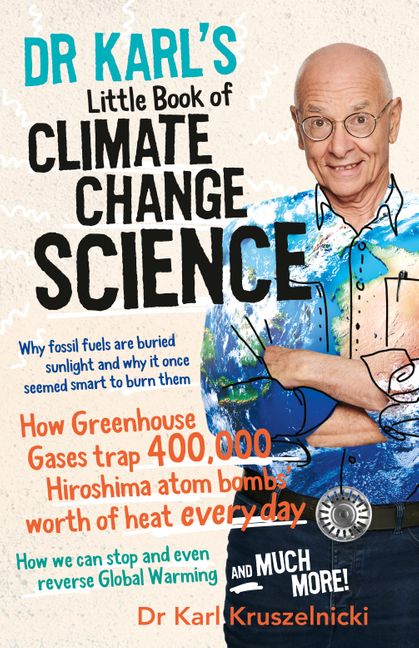Report on the State of the UK Climate and its Implications for Sustainable Development Goals
Introduction: Climate Change Impacts in the United Kingdom
A recent report from the Met Office, “State of the UK Climate,” provides a stark assessment of the accelerating impacts of climate change within the United Kingdom. The findings indicate that the nation is experiencing a “notably different” climate compared to previous decades, characterized by the increasingly frequent breaking of heat and rainfall records. These changes, driven by global greenhouse gas emissions, present significant challenges to the achievement of multiple Sustainable Development Goals (SDGs), particularly SDG 13 (Climate Action), SDG 11 (Sustainable Cities and Communities), SDG 6 (Clean Water and Sanitation), and SDG 15 (Life on Land).
SDG 13: Climate Action – Evidence of a Warming UK
Observed Climatic Shifts
The report confirms that the UK’s climate is warming at a rate of approximately 0.25°C per decade. This trend is a direct manifestation of global climate change and highlights the urgent need for enhanced climate action as outlined in SDG 13.
- The period 2015-2024 was 1.24°C warmer than the 1961-1990 baseline.
- The last three years are among the UK’s top five warmest on record.
- There has been a marked increase in very hot days and a significant decrease in extremely cold nights, with 14 fewer days of air frost in the last decade compared to 1931-1990.
Record-Breaking Weather Events
The frequency of extreme weather events underscores the growing climate volatility. The year 2024 saw numerous records broken, a trend continuing into 2025.
- Warmest Periods: 2024 included the second-warmest February, warmest May, and warmest spring since records began in 1884.
- Increased Rainfall: The UK is becoming wetter, particularly in winter. Rainfall between October and March in 2015-2024 was 16% higher than in 1961–1990.
- Intense Storms: The period from October 2023 to March 2024 was the wettest winter half-year in over 250 years, exacerbated by a series of named storms.
Impacts on Key Sustainable Development Goals
SDG 11 (Sustainable Cities and Communities) & SDG 6 (Clean Water and Sanitation)
The observed climate changes are placing significant stress on UK infrastructure, water resources, and community resilience, directly impacting progress towards SDG 6 and SDG 11.
- Increased Flood Risk: Widespread flooding in early 2024 affected regions including eastern Scotland, Derbyshire, and the West Midlands, disrupting communities and infrastructure, such as the Royal Shakespeare Company in Stratford-upon-Avon.
- Coastal Vulnerability: The report highlights that UK sea level is rising faster than the global average, increasing the risk of coastal flooding and storm surges, which threatens coastal communities and economies. This directly challenges Target 11.5, which aims to reduce the impact of disasters.
- Water Scarcity and Drought: Paradoxically, warmer temperatures have also led to drought conditions. England’s warmest June on record, combined with a dry spring, led to official drought declarations and the implementation of hosepipe bans in Yorkshire, affecting water security as per SDG 6.
SDG 15: Life on Land
The UK’s changing climate is causing demonstrable harm to terrestrial ecosystems and biodiversity, undermining the objectives of SDG 15.
- Phenological Mismatches: The timing of natural events is shifting. Spring 2024 was the earliest on record for frogspawn appearance and blackbird nesting. Such changes can disrupt food chains and ecosystem stability.
- Threats to Wildlife: Warmer weather affects species like dormice and hedgehogs. Fruits and nuts ripen earlier, reducing food availability in autumn when these animals need to build fat reserves for hibernation, threatening their survival.
- Forest Resilience: Native tree species are showing signs of stress from drought and heat. Research at the Alice Holt forest centre indicates that many native trees cannot cope, showing reduced growth and increased mortality. This necessitates research into more resilient, non-native species like coastal redwoods to maintain forest cover, a key component of SDG 15.
Conclusion: An Urgent Call for Adaptation and Mitigation
Scientific Consensus and Future Outlook
The report’s authors, including Met Office Chief Scientist Professor Stephen Belcher, emphasize that the evidence necessitates urgent adaptation to prepare for future climate extremes. The data confirms that the UK’s climate will continue to change, requiring proactive measures to build resilience across all sectors of society and the economy.
- The findings serve as a critical progress report on SDG 13, indicating that current efforts are insufficient to prevent escalating climate impacts.
- Adaptation strategies are crucial for protecting communities (SDG 11), managing water resources (SDG 6), and conserving biodiversity (SDG 15).
- The continued rise in sea levels, as noted by the National Oceanography Centre, presents a long-term, escalating threat that requires immediate and sustained policy focus.
1. Which SDGs are addressed or connected to the issues highlighted in the article?
Explanation of Relevant SDGs
- SDG 13: Climate Action: This is the central theme of the article. It directly discusses the impacts of climate change in the UK, such as rising temperatures, extreme weather events (heatwaves, heavy rainfall, storms), and the need for adaptation. The article explicitly states that these changes are “caused by the vast emissions of greenhouse gases our civilisation creates.”
- SDG 15: Life on Land: The article details the impact of climate change on terrestrial ecosystems and biodiversity. It mentions that “the country’s changing climate is having an impact on the natural world, with some species suffering,” specifically citing threats to dormice, hedgehogs, and native tree species, and changes in the timing of natural events (phenology).
- SDG 11: Sustainable Cities and Communities: The article highlights the vulnerability of human settlements to climate-related disasters. It describes “widespread flooding” affecting towns and cities like Stratford-upon-Avon and Tenbury Wells, leading to property damage and disruption of services, which relates to making cities and communities resilient.
- SDG 6: Clean Water and Sanitation: The article addresses issues of water stress and water-related disasters. It reports on “official drought” declarations, the implementation of a “hosepipe ban” due to dry conditions, and simultaneously, “widespread flooding” caused by extreme rainfall, all of which are challenges for water resource management.
- SDG 14: Life Below Water: The article touches upon this goal by reporting that “UK sea level is rising faster than the global average.” Rising sea levels directly threaten coastal communities and marine ecosystems, increasing the risk of coastal flooding and storm surges.
2. What specific targets under those SDGs can be identified based on the article’s content?
Identified SDG Targets
-
SDG 13: Climate Action
- Target 13.1: Strengthen resilience and adaptive capacity to climate-related hazards and natural disasters in all countries. The article is a clear call to action, with the Met Office Chief Scientist stating, “we need to prepare for the impacts this will have on the weather we experience,” directly addressing the need to adapt to heatwaves, floods, and storms.
-
SDG 15: Life on Land
- Target 15.5: Take urgent and significant action to reduce the degradation of natural habitats, halt the loss of biodiversity and, by 2020, protect and prevent the extinction of threatened species. The article’s focus on how “Dormice and hedgehogs – two of the UK’s most threatened mammals – are particularly affected” by climate change directly relates to this target.
- Target 15.2: Promote the implementation of sustainable management of all types of forests, halt deforestation, and restore degraded forests. The discussion on how “many of our current tree species just can’t cope” with drought and the research at Alice Holt forest centre to make forests “more resilient” aligns with this target.
-
SDG 11: Sustainable Cities and Communities
- Target 11.5: Significantly reduce the number of deaths and the number of people affected and substantially decrease the direct economic losses… caused by disasters, including water-related disasters. The article describes how floods and storms “caused the worst severe weather damage,” citing examples of cancelled performances and a collapsed wall, which represent the economic and social impacts of disasters on communities.
-
SDG 6: Clean Water and Sanitation
- Target 6.4: Substantially increase water-use efficiency and ensure sustainable withdrawals and supply of freshwater to address water scarcity. The mention of England’s “driest and sunniest spring,” leading to an “official drought” and a “hosepipe ban,” points directly to the challenges of water scarcity and the need for efficient water management.
-
SDG 14: Life Below Water
- Target 14.2: Sustainably manage and protect marine and coastal ecosystems to avoid significant adverse impacts. The report that “UK sea level is rising faster than the global average” highlights a direct threat to coastal ecosystems and increases the urgency of protecting them from the impacts of climate change, such as increased flooding and storm surges.
3. Are there any indicators mentioned or implied in the article that can be used to measure progress towards the identified targets?
Mentioned and Implied Indicators
-
For Target 13.1 (Strengthen resilience):
- Indicator: Rate of temperature change. The article provides specific data: “the UK is warming at a rate of around 0.25C per decade,” and the “2015-2024 period 1.24C warmer than the period between 1961-1990.”
- Indicator: Frequency of extreme weather events. The article states the UK is “breaking heat and rainfall records increasingly frequently” and mentions specific events like the “third heatwave” and the “wettest winter half year – October 2023 to March 2024 – in over 250 years.”
- Indicator: Change in the number of frost days. The article notes there were “14 fewer days with air frosts… in the last decade compared to the period 1931 to 1990.”
-
For Target 15.5 (Protect threatened species):
- Indicator: Changes in phenology (timing of seasonal biological events). The article reports that “Spring in 2024 was… the earliest in the series from 1999 for both frogspawn appearing and blackbirds nesting.”
- Indicator: Impact on threatened species populations. The article implies a negative impact by stating that threatened mammals like “Dormice and hedgehogs” are “particularly affected” by earlier ripening of fruits and nuts.
-
For Target 15.2 (Sustainable forests):
- Indicator: Forest health and mortality. The article implies this can be measured by observing “reduced growth,” “leaves looking a little bit raggedy,” and instances where “trees have actually died” due to drought stress.
-
For Target 11.5 (Reduce disaster impact):
- Indicator: Number and location of areas affected by disasters. The article identifies specific areas affected by flooding (“eastern Scotland, Derbyshire, Nottinghamshire and the West Midlands”) and drought (“Yorkshire and the north west of England”).
-
For Target 6.4 (Address water scarcity):
- Indicator: Level of water stress. This is indicated by the declaration of an “official drought” and the imposition of a “hosepipe ban.”
-
For Target 14.2 (Protect coastal ecosystems):
- Indicator: Rate of sea-level rise. The article explicitly states that “UK sea level is rising faster than the global average,” which serves as a direct indicator of increasing risk to coastal areas.
4. Create a table with three columns titled ‘SDGs, Targets and Indicators” to present the findings from analyzing the article.
| SDGs | Targets | Indicators |
|---|---|---|
| SDG 6: Clean Water and Sanitation | 6.4: Address water scarcity |
|
| SDG 11: Sustainable Cities and Communities | 11.5: Reduce the impact of disasters on people and economies |
|
| SDG 13: Climate Action | 13.1: Strengthen resilience and adaptive capacity to climate-related hazards |
|
| SDG 14: Life Below Water | 14.2: Protect marine and coastal ecosystems |
|
| SDG 15: Life on Land | 15.2: Promote sustainable management of forests |
|
| 15.5: Halt biodiversity loss and protect threatened species |
|
Source: bbc.com






